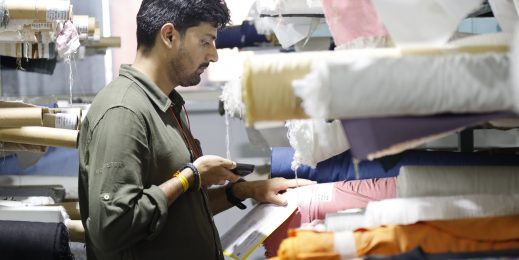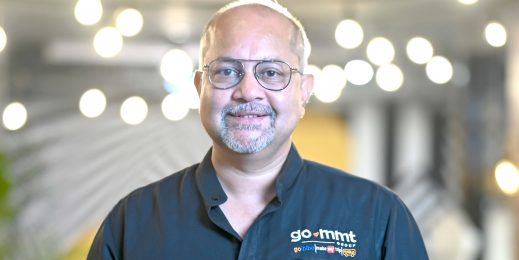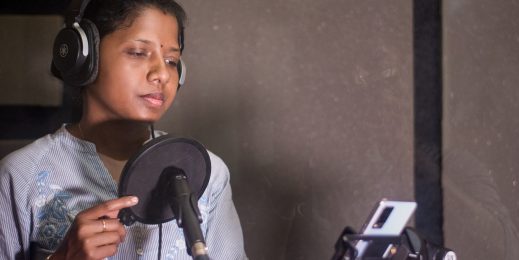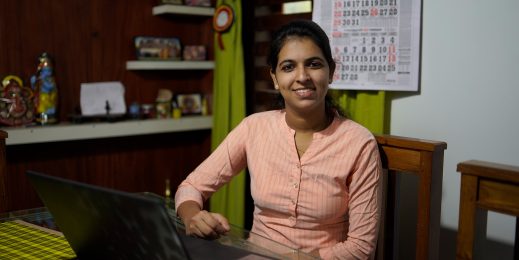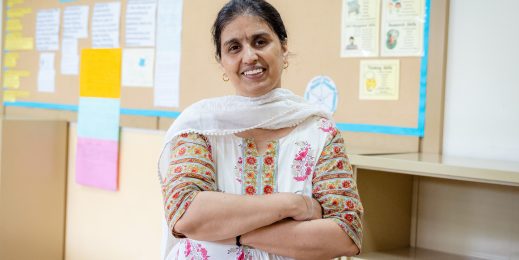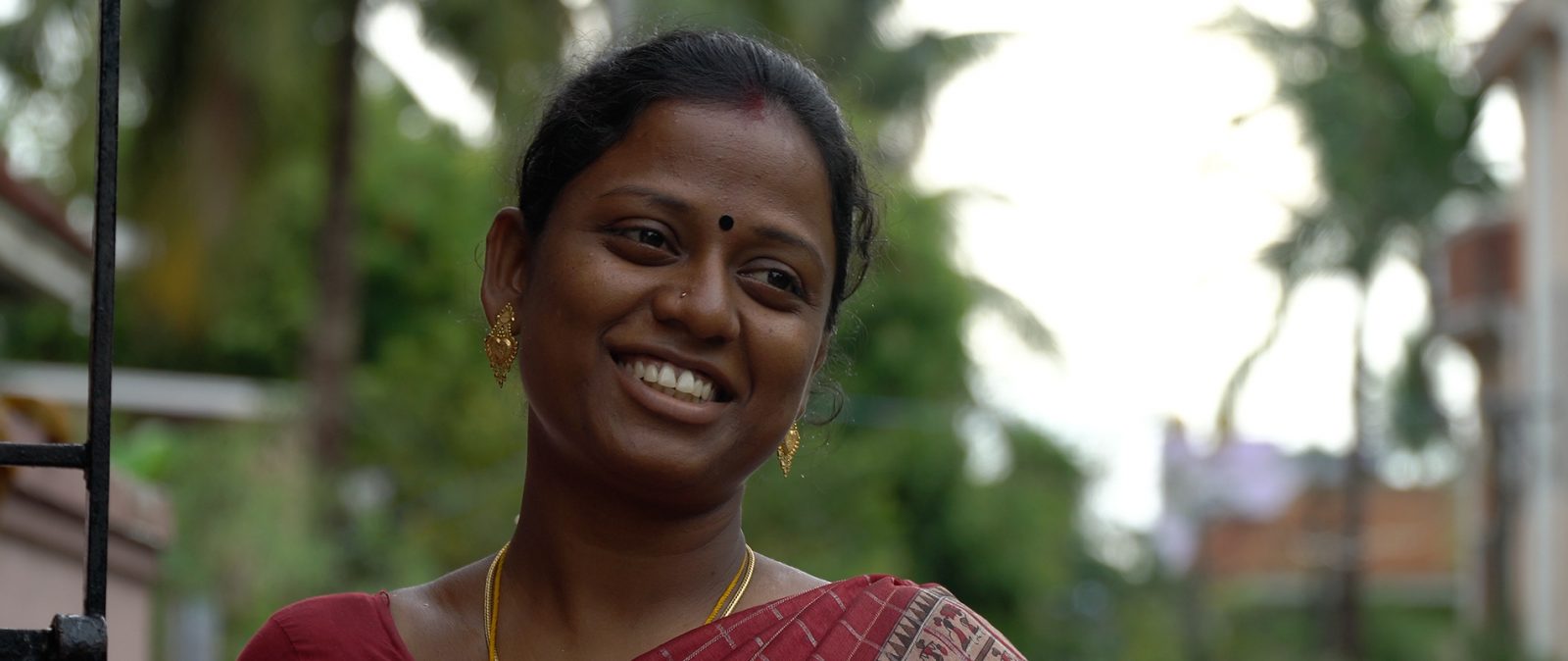
A fresh start: Bringing Indian youth closer to 21st century jobs
The first wave of India’s digital revolution put Bangalore on the map as India’s Silicon Valley. A second one is now being driven by young people across the length and breadth of India.
Meet three young Indians hungry to learn digital skills to access economic opportunities. Six to eight million young people join the workforce every year in India. For Farha, Paige and Devi, access to vocational training is fueling employment ambitions, aspirations and life dreams. Their upskilling is proving essential in their journey to earn a living, while only 5 percent of the workforce in India goes through any formal training.
Farha, from Delhi, is a young woman who in another time might have been constrained by familial traditions, but now aspires to be a magistrate. She knows that to achieve her dream, a strong foundation of digital skills and work experience will be essential. In India, only 27 percent of women make up the workforce compared to 79 percent of men.
Paige is a transgender from Hyderabad who dreams of having an IT job in the healthcare sector, where her employability would be judged on her skills and experience and not her gender choice, appearance and lifestyle. Her challenge is to make the shift from the informal economy of begging and sex work, to the formal economy where her rights, health and safety will be protected and respected.
Devi, from Chennai, is a young woman who had a tough start in life but now has big plans to grow her water delivery business, using an online customer management system. Her ambition is to inspire other women in her community to follow her example.
Microsoft India’s strategy to empower people like Farha, Paige, and Devi has three strands: create opportunities for underserved young people to acquire 21st century digital skills through technical and vocational training; invest in non-profits to deliver this training while empowering their staff with modern workplace technology; and advocate for new digital friendly pro-work, pro-youth policies.
Manju Dhasmana, Director of Corporate Affairs at Microsoft India explains, “Because the young people we work with come from underserved communities, it is critical to complement digital skills training with life skills – job readiness, confidence building, nurturing an entrepreneurship mindset – to connect them to economic opportunities and set them on a course for a better livelihood.”
To achieve penetration in rural and marginalized areas, Microsoft partners with non-profits like NASSCOM Foundation, Aide et Action and the CAP Foundation. They run mobilization campaigns to find young participants cut off from training opportunities. Paige is a case in point. Transgenders in India often live in closed communities. Social stigma frequently denies them access to training to build their chances of employment. When the CAP Foundation designed a course specifically for the transgender community, they found a common pragmatic need. Dr. Nalini Gangadharan, Founder and Chairperson at CAP Foundation explains, “We started developing an employability skills program that allows transgenders to learn, earn and move on in life.”
India’s big dream for full employment will come to a halt if the imbalance between workforce participation of men and women isn’t addressed. Devi’s case is proof of the saying, “Give us the tools and we will finish the job”. Her training, provided by Aide et Action, focused on learning Microsoft Office. Within weeks she had the idea to use Excel to list all her customers, their orders and frequency of water consumption. She shifted from her dog-eared customer list scribbled in an old exercise book to a system that she is now leveraging to drive business growth and improve customer service. Leveraging her new entrepreneurial skills, she has become an employer herself with a staff of three. A community role as advocate for other local women seeking to set up a business has enabled her to enthuse others to become digitally literate.
Devi’s husband, an ardent supporter of her business, explains, “She’s improved her skills and knowledge by using a computer. She’s developing her business and my support is always with her.”
In these days of digital dominance in our lives, it is hard to imagine that a young woman from Delhi might not know how to switch on a computer. This was Farha’s case a year ago when she was recruited by NASSCOM for the Code A Future program. Her trainer, Faezan Gouri says, “When I first started training Farha, she did not know anything about technology. She was afraid to even start up the computer.”
After assurances to her family that her elder brother would drop off and fetch Farha from classes, her parents agreed for her to attend. Three months later, Farha graduated with a certificate in digital skills. Almost immediately she was snapped up by a local call center who offered her a job as supervisor of a telesales team. Although Farha loves the job, she sees it as a stepping stone to build her skills so she can pursue a career in India’s legal system. Her passion is women’s rights, something she now researches every evening after class using the training center’s laptop, internet connection and newly learnt web skills.
Paige’s opportunity to improve her employability and overcome stigma; Devi’s blossoming entrepreneurial skills leading to a new community role; Farha’s awakened interest in women’s rights driven by online research: these examples demonstrate the multiplier effects that digital skilling has on young people.
With 46,000 youth trained last year by four nonprofits resulting in over 17,000 being employed and going on to double their family’s income, Microsoft Philanthropies in India is showing that a triple focus on trainee, training provider, and employer, yields strong outcomes. With 2,500 new entrepreneurial ventures established as a direct result of the digital skills training, it also demonstrates that the positive impact digitally literate people are having on Indian society goes far deeper than the figures alone suggest.






